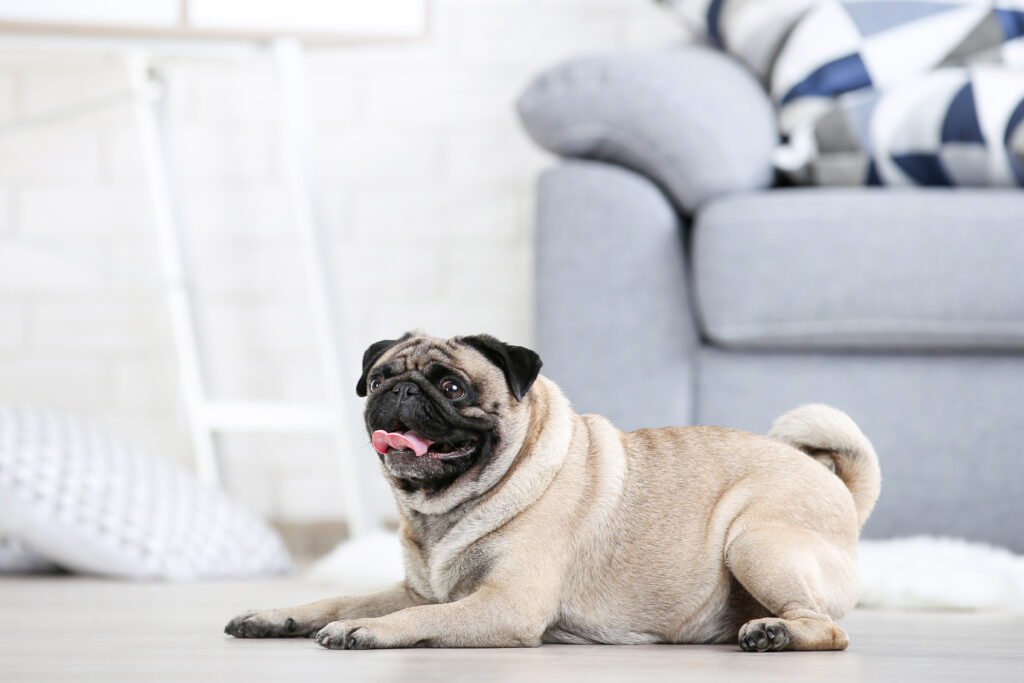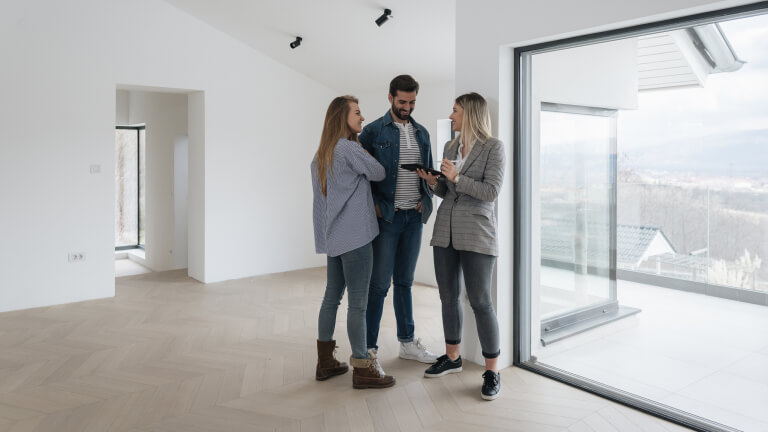10 Quiet Dog Breeds for Your First Apartment

Your journey to independence has come to fruition! Now that you have your own apartment, you’re looking for that special roommate — of the furry, four-legged variety. What breeds are the best apartment dogs — low-barkers that are well-suited for apartment living? We asked a dog behaviorist for some insight on how to choose your furbaby roommate and provide ideas of good apartment dogs.
Low-barking breeds
Russ Hartstein, certified dog behaviorist based out of Los Angeles and CEO of Fun Paw Care, has been around his share of barking breeds. But he’s quick to point out that while some breeds are more vocal, like a Jack Russell terrier or chihuahua, each dog is an individual.
“What makes a dog more vocal is often environmental fulfillment, and meeting the dog’s needs as much as their genetics and/or breed,” Harstein says.
Like an infant who cries to communicate that they need something, barking is a dog’s way of communicating frustration, anxiety, fear, depression, boredom, or attention needs. Sometimes, the barking signifies something more serious. ”
It is important to recognize that barking, whining, or growling may also be part of a larger or more serious issue — such separation anxiety disorder,” says Hartstein. This may be true if your pup is moving from the security of a litter of siblings to your apartment. Here’s how to help your furbaby prepare for moving day.
10 quiet apartment dog breeds
What might surprise you the most about this selection are the large dog breeds Hartstein suggests. Sure, small dogs take up less space and are easier to clean up after, but don’t rule out larger breeds — unless they aren’t allowed by your apartment.
“Many of the large breeds that are ignorantly banned from apartments for being too big, or are discriminated against for being ‘aggressive,’ are actually quiet, wonderful apartment dogs,” says Hartstein. Take a closer look at the following best dogs for small apartments.
- Greyhound: A great couch potato (and typically among dogs under 25 pounds) who isn’t very active and loves to cuddle. Usually reserved toward strangers.
- Shar Pei: A loyal and independent 20 lb dog breed that is usually calm. Very adaptable to your activity level and content with a few short walks, or happy with more activity.
- Bernese Mountain Dog: Large, affectionate, sweet, goofy, and always up for fun. They do shed a lot, and weekly brushing is a necessity.
- Bulldog: If you don’t mind snoring and keeping those adorable wrinkles dry and free of infection, this breed will be happy with leisurely walks and sitting next to your feet. They’re typically a 30 lb dog in size, but are good apartment dogs.
- Italian Greyhounds: Your downstairs neighbors will barely know you have one of these 15 lb dogs or smaller, because these mini versions of the greyhound are dainty, delicate, and very affectionate.
- Basenji: The shape of their larynx makes it impossible for them to bark. They can growl or make a yodeling sound, but even that is rare. What’s not rare in a Basenji? They require lots of exercise.
- French Bulldog: Very quirky, intelligent, and fun to be around. Sure to be the class clown of your building.
- Newfoundland: Perfect breed if you love a big dog who is sweet and oh so affectionate. These gentle giants prefer to live inside and are happy with a brisk 30-minute daily walk.
- Cavalier King Charles Spaniel: Royals have loved them for years as a quiet lap dog. This breed is happy to hold court with you on the couch or join you for a walk. Despite the lapdog status, it does have a scenting and hunting lineage, so don’t let them off the leash.
- Pug: A small and mischievous dog that packs a lot of personality in its stocky body. It loves humans and dogs alike and loves to eat. While it’s content to hang out all night on the sofa with you, be sure to squeeze in some exercise to work off the pizza it steals when you’re not looking.
Home alone
As much as you would like to stay on the couch and cuddle with your new furbaby, someone has to go out and earn the kibble. Puppy cams are an ideal way to monitor your pup for barking or other behavior issues, especially if he’s not crated. Helping your dog get used to your new home is essential.
“Generally, new dogs will stop whining and barking after about 2-3 days when left alone for the first time,” says Hartstein. It’s important not to rush in and rescue your pup or console him during the time.
“However, if your dog is whining and barking when you leave for longer than a few minutes after the initial three-day period, your dog may be experiencing isolation distress or separation anxiety disorder,” Hartstein says. “In either case, call a certified behaviorist who specializes in this for help.”
In time, your furbaby will adjust and excitedly welcome you home with a wagging tail and slobbery kisses.
The bottom line
The best apartment dogs aren’t necessarily tiny dogs under 25 pounds. Larger breeds can also be good apartment dogs. Regardless of which kind of apartment dog breeds you choose to share your home with, make sure you take special care when you move so they adapt to their new apartment well. Understand the signs of stress or anxiety, such as excessive barking and give them time to adapt to their new home.
Frequently asked questions
How can I make my apartment dog-friendly?
Make sure your dog has his or her own space in the apartment, such as a corner with a fluffy bed or a basket of favorite chew toys.
Is it bad for a dog to live in an apartment?
It is not bad for a dog to live in an apartment — all it takes is some adapting for both of you. Make sure you give your dog long walks outside regularly so they can get the exercise they need.
How hot is too hot for a dog?
Some dogs with longer hair or thicker coats are more prone to heatstroke than others. Remember that dogs don’t sweat — if your dog is panting heavily, turn on a fan, provide a cool shady spot for your dog and enough water to cool down.



